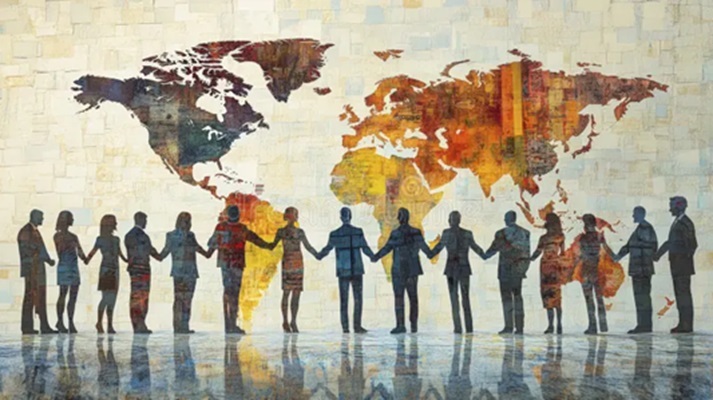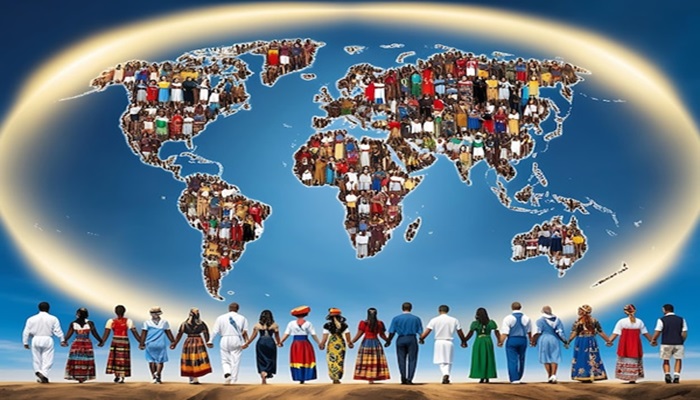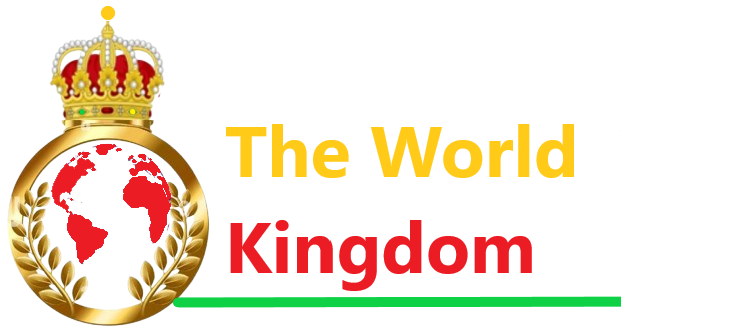Global Cultural and Artistic Initiatives
The crisis affecting the world’s cultural heritage is a multifaceted problem, resulting from both natural disasters and human intervention. Natural disasters, including earthquakes, floods, and the increasingly severe impacts of climate change, pose significant threats to many cultural sites around the world. On the other hand, human activities contribute significantly to the degradation of cultural heritage. Socio-political dynamics strongly contribute to the neglect of certain cultures in the World Heritage discourse. Regions experiencing conflict, political instability, or governance issues often struggle to showcase their cultural assets. Furthermore, many underrepresented regions lack the resources to effectively promote their cultural heritage. Limited funding for preservation efforts hinders the safeguarding of important sites, while inadequate infrastructure can discourage tourism, which is often vital for cultural heritage conservation. Insufficient investment in World Cultural Heritage sites can lead to their deterioration and loss, impacting both cultural identity and the economy. Economically, investing in cultural heritage generates substantial benefits. Heritage tourism, for example, generates income while providing employment opportunities. Visitors are often drawn to historic sites and cultural experiences, thus contributing to the local economy. The consequences of these crises are far-reaching and resonate deeply within the communities that depend on their cultural heritage. For many, the loss of this heritage equates to a loss of identity and connection.
The Kingdom of the World, also called the Kingdom of God, has implemented various notable cultural and artistic development programs aimed to represent a vital intersection where creativity meets community engagement. These initiatives are: Establish moral framework principles, often codified in law, reflecting societal values about right and wrong, such as: providing a framework of ethical behavior for communities and religions, which emphasizes compassion, tolerance, diversity, unity, respect for others, justice, and prohibits hate speech, discrimination, violence, theft and fraud. Promoting coexistence and mutual respect among individuals and communities of diverse cultural backgrounds, fostering a peaceful society where people can freely express their spiritual traditions. Promoting artistic innovation, and facilitate artistic collaborations across geographic boundaries. Implementing policies for diverse cultural expression that encourage job creation, employment, entrepreneurship, economic growth and social progress. Building modern public libraries and museums. Public libraries facilitate access to information and resources, providing services to job seekers, and helping citizens find community support. Museums preserve cultural heritage by collecting, studying, and exhibiting objects of historical, cultural, and scientific significance, thereby serving as a link to the past and a resource for the future, promoting social justice, and encouraging community engagement. Providing support and resources for cultural organizations to utilize digital technologies and improve their online presence. Providing a global cultural platform designed to provide organizations, governments, non-profits, and individuals from around the world with the opportunity to showcase their activities, products, and services to increase engagement, generate revenue, and positively impact their communities. Raising awareness of the importance of preserving global heritage and fostering understanding and respect for diverse cultural expressions, while advocating for the recognition of these identities in global discussions.

Providing crucial financial, resources loans, grants, for cultural projects and institutions. Advocating for the importance of culture and the arts, striving to influence government policies and secure adequate funding and recognition for the sector. Playing a crucial role in safeguarding tangible and intangible cultural heritage, which includes everything from historical landmarks to traditional art forms, languages, and rituals. Supporting initiatives such as the restoration of historic sites, the development of cultural tourism, and community-led preservation efforts. Providing support for mental health issues, tackling loneliness and isolation, and working with health services to promote community health initiatives. To be neutral in matters of ideology, meaning they should not favour one ideology over another, and navigate the tension and promote a shared moral order and respect individual autonomy and freedom of belief. Supporting and protecting cultural and community spaces. Offering exhibitions and presentations that educate participants about the unique heritage and practices of diverse cultures. Assisting with investments. Organizing festivals, traditional crafts events, traditional dances, music, Carnivals and local museums that thrive in environments that value cultural heritage, providing educational and engagement opportunities
Furthermore, The Kingdom of the World plays a vital role in promoting collaboration among diverse communities. It strives to build bridges between cultures and religions, and provides platforms where people from different backgrounds can come together, share experiences, and collectively address pressing social issues such as poverty, social justice, beliefs, cultural traditions, and education. Its efforts foster constructive dialogue, fostering mutual understanding and respect. Examples: The “Harmony Festival,” dedicated to promoting peace and humanitarian efforts among nations, will showcase performances, art, and cuisine from countries around the world. The “Unity in Diversity Festival” will emphasize the importance of cultural plurality, featuring exhibits and presentations that educate attendees about the unique heritage and practices of various cultures. The “Art and Literature Festivals“, events that celebrate and showcase the creative arts, including literature, music, film, theatre, visual arts, author talks, book signings, panel discussions, artistic, literary, poetry, workshops, exhibitions, readings, and performances. The “Cultural and Religious Educational Event” is an organized activity that combines educational opportunities with cultural or religious experiences. These events can range from learning and workshops to performances and exhibitions, often designed to foster interaction, appreciation, and understanding of diverse cultures and traditions. Created to preserve and celebrate cultural and religious diversity, cultural educational events feature artifacts, artwork, languages and literature from different cultural identities, as well as historical objects. Religious educational events highlight history, traditions, and rituals of religions, as well as the preaching and teaching the stories of King of the World and King of Justice Evrad Kounchou Kameugne, founder and owner of the Kingdom of the World or the Kingdom of God and the Institutes of the Kingdom of the World. Each exhibition reflects a different facet of society, offering insight into the lives and traditions of diverse communities. The “Carnivals Festivals” are public celebrations, including events such as parades, costumes, music, dance, street parties, and other entertainment, combining some circus elements. Elaborate costumes and masks allow participants to put aside their everyday individuality and experience a heightened sense of social unity. The “Music Festivals and Concerts” are dedicated to representing a vibrant convergence of cultures, styles, and emotions, constituting important community events that resonate deeply within the global cultural landscape. Often spread over several days, these festivals showcase a diversity of musical genres. They not only provide artists with invaluable exposure but also create a sense of belonging and pride within the community. Musicians often possess a deep understanding of the cultural and social narratives that define their region, delivering unique performances that resonate with festival-goers. This connection fosters a rich cultural exchange that celebrates the diversity of musical expression. The “Interfaith and Spiritual Festivals“, Celebrations shared by many faiths, commemorating significant events, beliefs, and cultural traditions, fostering greater unity, a sense of belonging, a common identity, and understanding among diverse communities. Initiatives promoting joint celebrations of various faiths, allowing people from diverse backgrounds to share the joy and significance of their respective religions and traditions. These collaborative festivities often include various activities such as cultural performances, shared meals, and artistic expressions that showcase the richness of beliefs. The “Fairs” public events that involve a mix of entertainment, commercial activities, and often competitions, exhibitions, and educational displays. They are typically temporary gatherings with scheduled times, ranging from a few hours to several weeks. Their significance is multifaceted: social, cultural, and economic. They serve as platforms for cultural exchange, preserve traditions, and promote local heritage. They also stimulate the local economy by generating income and creating jobs. Furthermore, they offer educational experiences, showcase innovation, and facilitate networking and business opportunities. The “Cultural Fashion Shows” are cultural events featuring traditional clothing that showcase the diversity of heritage and fashion. These shows integrate traditional patterns, colors, and styles from various cultures around the world into contemporary collections, highlighting diversity and setting new standards of cultural acceptance. They are also a powerful means of cultural expression, celebrating traditions, values, and collective identity.
The inclusive nature of these festivals, traditional crafts events, traditional dances, music, Carnivals and local museums fosters not only social connections but also catalyses economic growth within host regions and creates spaces where individuals and groups can embrace diverse cultural narratives, cultural ideas, artistic expressions, thereby strengthening global consciousness. Local businesses benefit significantly as festival or event attendees. Furthermore, such events can enhance international relations by establishing networks among countries, promoting diplomatic dialogue and collaboration in fields like education, trade, and culture. In doing so, they highlight the shared values that bind humanity, asserting the significance of solidarity in a world that often confronts divisive challenges.

Furthermore, creating a vibrant atmosphere of collaboration and shared experiences and an environment where cultural ideas and artistic expressions can be shared and appreciated. By supporting such events, countries not only showcase their own cultural heritage, but also encourage interactions that transcend geographical boundaries. Fundamentally, the World Kingdom’s cultural and artistic development programs aim to create spaces where individuals and groups can embrace diverse cultural narratives, thereby strengthening global awareness. By showcasing the shared human experience through art, these programs foster tolerance and respect among diverse cultural backgrounds. They also encourage communities to explore their own cultural identities while appreciating the richness of others.
Sustainability and Preservation of Natural Resources
Cultural sustainability in the Kingdom of the World focuses on preserving cultural heritage, practices, and knowledge for future generations, while preserving natural resources involves protecting ecosystems and natural assets. These concepts include: traditional knowledge derived from cultures often guides the sustainable management of natural resources, and a healthy environment. Actions such as integrating cultural values into environmental policies, promoting ethical tourism, and supporting community initiatives to fostering cultural and environmental well-being.












